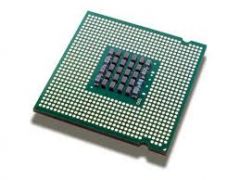![]()
![]()
![]()
Use LEFT and RIGHT arrow keys to navigate between flashcards;
Use UP and DOWN arrow keys to flip the card;
H to show hint;
A reads text to speech;
9 Cards in this Set
- Front
- Back

CPU
|
This is often described as the brain of the computer.
The purpose of the CPU is to process data. It is where all the searching, sorting, calculating and decision making takes place in the computer. |
|
|
Registers
|
The name of the internal temporary memory areas are called ‘registers’
|
|
|
Address Bus
|
To be able to complete/do the fetch part of the cycle the CPU makes use of a vital hardware path called the ‘address bus’.
|
|
|
Data Bus
|
This means that the data that is moving from the main memory into the CPU travels through another bus called the ‘data bus’
|
|
|
Decode
|
For the making sense of the instruction that was just fetched, the CPU uses a process called decode.
|
|
|
Instruction Set
|
The CPU is designed to understand a specific set of commands which are different for every make of CPU. The set of commands is called the ‘instruction set’
|
|
|
Execute
|
It is the name of the part of the cycle where the actual data processing takes place.
|
|
|
Control Unit.
|
One; it controls and monitors the hardware attached to the system to make sure that the commands given to it by the application software are used. For example if you send something to print the control unit will keep a check that the instructions are sent to the printer correctly.
Two; It controls the input and output of data so that the signals go to the right place at the right time. Three; It controls the flow of data within the CPU – which is the Fetch-Execute cycle. |
|
|
ALU
|
Arithmetic Logic Unit
Arithmetic part – which does exactly what you think it should – it performs the calculations on the data e.g. 3 + 2 = 5 Logic part – this deals with logic and comparison, for example it works out if one value is greater, less than or equal to another. |

